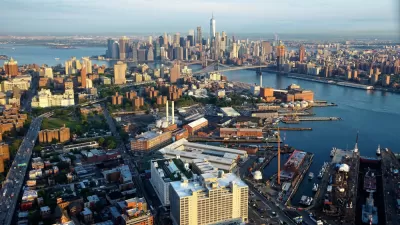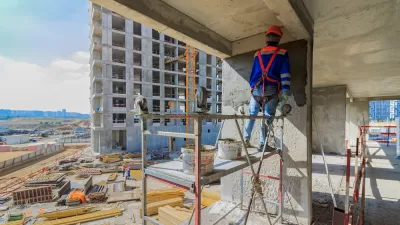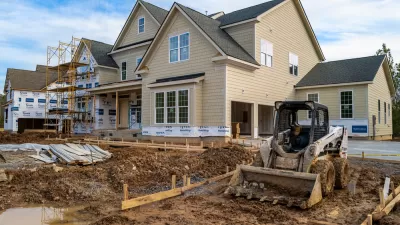Does new market rate housing increase the average cost of housing, by inducing demand, or does it help stabilize the housing market by offering new supply? The debate continues in San Francisco.

Proponents of increased housing development in the Bay Area argue that lowering housing costs is as simple as building more housing. They say that the principle of supply and demand requires new housing development to drive prices down. On the other hand, a common counterargument contends that in San Francisco, simply building more housing can't lower prices as the demand is too high and there is simply not enough land on which to build.
Familiar to most San Franciscans is the concept of "induced demand," which holds that the construction of pricey housing attracts wealthy transplants, a process that development opponents argue can upend the historical character of neighborhoods. Despite these concerns, Adam Brinklow points to research suggesting that, "many new housing developments face allegations that building more could drive housing prices higher. Traditional economic thought dictates that these ideas are not only wrong, they’re irrational, like something out of a topsy-turvy Lewis Carroll fable." Put simply, to reduce the market price of housing, cities must build more.
Brinklow calls for a more nuanced approach that considers neighborhoods and gentrifying effects of projects on a case by case basis to balance the need for lower-cost housing and the preservation of charming San Francisco neighborhoods.
FULL STORY: Yes, building more housing will drive down SF home prices—but there’s a catch

Alabama: Trump Terminates Settlements for Black Communities Harmed By Raw Sewage
Trump deemed the landmark civil rights agreement “illegal DEI and environmental justice policy.”

Study: Maui’s Plan to Convert Vacation Rentals to Long-Term Housing Could Cause Nearly $1 Billion Economic Loss
The plan would reduce visitor accommodation by 25% resulting in 1,900 jobs lost.

Why Should We Subsidize Public Transportation?
Many public transit agencies face financial stress due to rising costs, declining fare revenue, and declining subsidies. Transit advocates must provide a strong business case for increasing public transit funding.

Wind Energy on the Rise Despite Federal Policy Reversal
The Trump administration is revoking federal support for renewable energy, but demand for new projects continues unabated.

Passengers Flock to Caltrain After Electrification
The new electric trains are running faster and more reliably, leading to strong ridership growth on the Bay Area rail system.

Texas Churches Rally Behind ‘Yes in God’s Back Yard’ Legislation
Religious leaders want the state to reduce zoning regulations to streamline leasing church-owned land to housing developers.
Urban Design for Planners 1: Software Tools
This six-course series explores essential urban design concepts using open source software and equips planners with the tools they need to participate fully in the urban design process.
Planning for Universal Design
Learn the tools for implementing Universal Design in planning regulations.
Caltrans
Smith Gee Studio
Institute for Housing and Urban Development Studies (IHS)
City of Grandview
Harvard GSD Executive Education
Toledo-Lucas County Plan Commissions
Salt Lake City
NYU Wagner Graduate School of Public Service





























